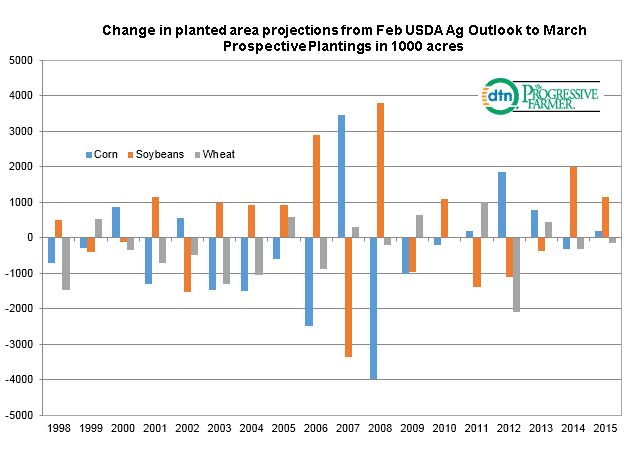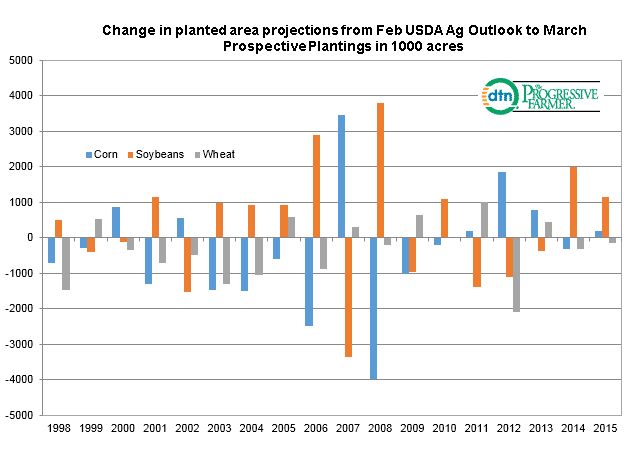Fundamentally Speaking
Feb Outlook vs March Prospective Plantings
The USDA issued its first estimates of 2016 planted acreage for the major crops at this week's Outlook Forum, though the more important planting figures will occur on March 31st when the Prospective Plantings report is released.
This is a report that surveys over 84,000 farm operations the first two weeks of March on what crops or mix of crops farmers intend to plant for the upcoming growing season.
The only exception is winter wheat where the USDA issues its first estimate of winter wheat seedings in January.
This graphic shows the change in planted area projections from the USDA's Ag Outlook Forum conference usually held the third or fourth week of February to the March Prospective Plantings issued the last business day of March.
P[L1] D[0x0] M[300x250] OOP[F] ADUNIT[] T[]
We have data from 1998 to 2015 and for corn the average differential for this time span is -331,000 acres meaning that the March intentions has averaged 0.331 million acres below the USDA projection given at their Outlook Forum.
The high was 3.454 million acres in 2007 and the low was -3.986 million the year after.
For soybeans the average was 340,000 acres meaning that the March report averages 0.340 million above the Feb Outlook number with a high of 3.393 million acres in 2007 and a low of -3.360 million in 2008.
Finally for wheat the average is -300,000 meaning the March intentions averages about 0.30 million acres below the Feb USDA projection with a high of 1.021 million in 2011 and a low of -2.092 million in 2012.
Farmers have their own set of reasons for planting one crop or the other which may explain the difference along with the time lag between when the USDA comes up with their Outlook projections and the end of the survey period in March where prices can change altering producer thoughts on which crop or crops to plant.
We find it interesting that the average differential for wheat is as high as that for corn and soybeans even though the winter wheat acreage number has already been released.
We should mention that the standard deviation for wheat is less than half that for corn or soybeans so there is less variability in the change in wheat acreage as opposed to corn or soybeans and given the January release of the winter wheat seedings report that should be expected.
(KA)
© Copyright 2016 DTN/The Progressive Farmer. All rights reserved.






Comments
To comment, please Log In or Join our Community .